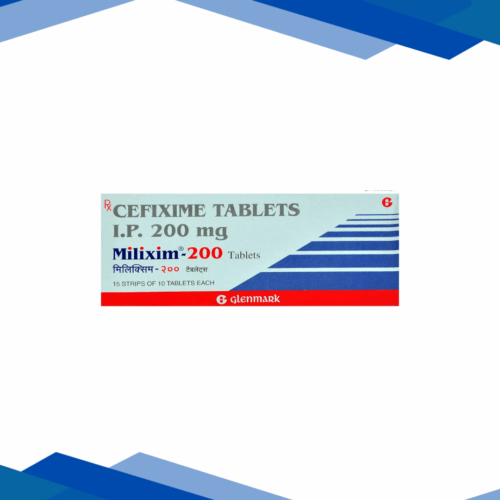Biospas Forte
No Prescription yet? Don’t worry! Click Here to Get Online Consultation
Why Prescription is Required?
✅ Providing Right Medicines
Prescriptions are complex documents. We proofread and recheck at various steps to provide you the right medication in the correct form and dose.
⚖️ Helps Comply with the Law
Most medicines cannot be sold without a valid prescription, as per the Drugs and Cosmetics Act, 1940 and Rules, 1945.
Book Appointment with Doctor
Biospas Forte is used for the management of mild to moderate pain, such as headaches, toothaches, joint or muscle pains, and period pain.
Mefenamic Acid
MEFENAMIC ACID
Overview:
Mefenamic acid helps soothe aches and pains — especially those caused by your period, muscle strain, or head pressure.. It also helps calm down swelling and discomfort so you can feel more at ease and carry on with your day.
Classification:Nonsteroidal Anti-inflammatory Drug (NSAID)
Uses:
Mefenamic acid is used to relieve mild to moderate pain, especially period cramps, muscle aches, joint pain, toothaches, and headaches.This medicine also soothes inflammation and helps cool down a fever, making tough days a little easier.
How it works:
Mefenamic acid works by blocking certain natural substances in your body (called prostaglandins) that cause pain, swelling, and fever. By cutting down these chemicals, it helps soothe pain, calm swelling, and lower a high temperature — helping you feel better faster.
Dosage: As prescribed by your doctor.
Side Effects:
Stomach pain or cramps
Nausea or vomiting
Heartburn or indigestion
Headache
Dizziness
Precautions:
Prior to the intake of Mefenamic Acid, inform your doctor whether you experience stomach ulcers, bleeding trouble, kidney, liver complications, or heart failures. It should be taken along with food or milk since it can upset the stomach lining.Pregnant women (at least during the later stages), lactating mothers, and those intending to do so should not take it without first consulting their doctor as it may not be safe at all stages of pregnancy.It should also not be conjoined with other forms of pain relievers such as ibuprofen or aspirin unless the doctor permits otherwise. Excess of NSAIDS may cause chances of developing stomach or kidney problems
Disclaimer: This content is for informational purposes only. Always consult a healthcare provider for medical advice and proper dosage.
Paracetamol
PARACETAMOL
Overview
Paracetamol is a commonly used medication that helps relieve mild to moderate pain and reduce fever. It’s often used for:
Headaches
Toothaches
Muscle and back pain
Menstrual cramps
Cold and flu symptoms
It’s available over-the-counter and is considered safe when used as directed.
Classification
Analgesic and antipyretic agent
Uses
Paracetamol is used for pain relief and fever. It is used to relieve pain in conditions like headache, muscle pain, or dental pain.
How it works
When you produce a fever, your body’s internal thermostat — found in the hypothalamus portion of the brain — is raised to a higher temperature. This new set point is usually induced by pyrogens (substances made during infections) that tell the body to produce more heat as a form of immune defense.
Due to its effects in the brain, paracetamol reduces the production of reactive prostaglandins. Prostaglandins are disease-fighting chemicals released during infection that in turn, raise the body’s temperature set point. By decreasing prostaglandin levels, paracetamol enables the hypothalamus’ temperature control centre to bring the body’s temperature back down to normal, allowing the body to cool down and the fever to subside
Dosage
As directed by the physician
Precautions
Most people can take paracetamol safely, including:
pregnant women
breastfeeding women
children over 2 months of age – lower doses are recommended for young children
always get advice before taking paracetamol if you:
have liver or kidney problems
have problems with alcohol, like long-term alcohol misuse
are very underweight
are taking other medications
Don’t take paracetamol if you’ve had an allergic reaction to it in the past
Side effects
common side effects of paracetamol.
Nausea
Swelling
Vomiting
Pain
Tenderness in the upper abdomen
Sweating
Loss of appetite
Stomach cramps
Diarrhea
Major side effects are as follows:
Dark-colored urine
High fever
Lower backache
Skin having red spots
Rashes
Inflammation
Itching
Sore throat
Ulcers
Breathlessness
Yellowish eyes
Disclaimer
This content is for informational purposes only. Always consult a healthcare provider for medical advice and proper dosage.

















